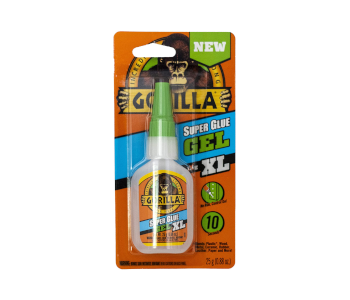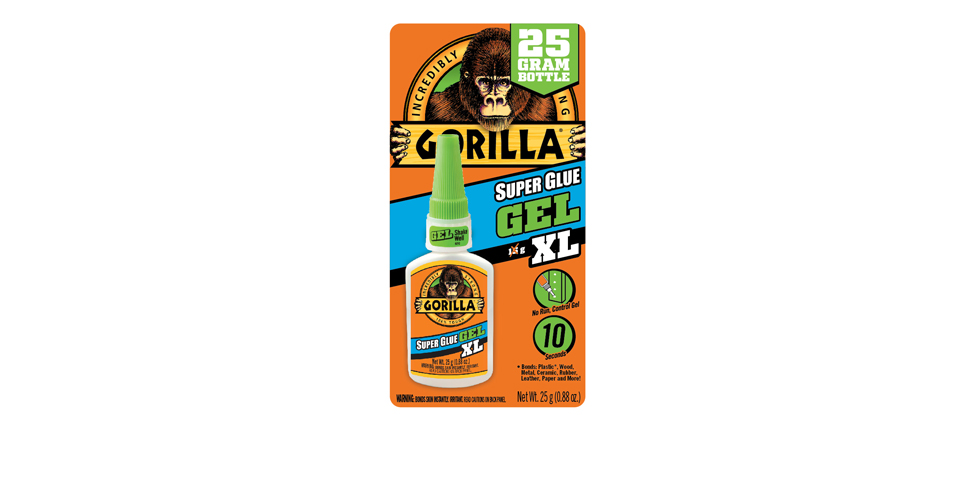A Guide to Gluing Metal to Metal Parts
Gluing may not be the first thing to pop in one’s mind when thinking of ways to bind two pieces of metal together, but it’s a perfectly viable option. However, the convenience of merely gluing metal to metal is making this practice more and more common.
What exactly is metal glue and how does it work? Is there any downside to using glue to bind metal parts compared to more traditional methods? What are the proper techniques for gluing metal to metal? We’ll be answering all those questions and more in this detailed guide.
What is metal glue made of?
A metal glue or metal adhesive is such a novel way of binding metals together that it’s hardly surprising that most people aren’t familiar with them. Just like any other type of glue, metal glue only needs to be applied to the surface of a metal part and pressed against another part to create a binding effect. There is a lot of preparation that goes into this process, which we will discuss in detail later on.
While there isn’t a specific type of glue that is classified as “metal glue,” there are only a few glue compounds suitable for bonding metal to metal. Metal glues generally belong to three types:
Epoxy glues
For high-performance applications, a two-part resin epoxy is usually the best option for metal parts. A wide range of epoxies with different physical and chemical characteristics is available if you need to bond metal surfaces together. They can also be used for filling gaps and holes. The versatility of epoxy glues is probably their biggest advantage in this comparison.
Polyurethane glues
Polyurethane glue is ideal for metal to metal applications that also need to be aesthetically pleasing. This is because polyurethane glue looks great when sanded, polished, stained, or painted. Most polyurethane glues also have moisture-resistant and UV-resistant properties, which help to protect metal parts from the effects of the elements.
Superglue
For speed and simplicity, superglues can also be used to bind metal parts. The benefit of going with superglue is the fact that they are so easily available. However, you’ll have to be discerning to pick a sufficiently high-performance option. As with most superglue applications, binding metal parts with superglue is very quick and hardly needs any complex clamping contraption.
While the three types of glues mentioned above are all quite common, not all glues classified under these categories are appropriate for metal. To make sure that you get one that is fit for your objectives, check out our recommended list below.
Pros and cons of gluing metal to metal
Is gluing the best option for your metal to metal binding needs? That depends on a few factors, but as with any crucial decision, there are pros and cons to every option.
PROS
Faster and easier to do
Compared to welding or riveting your metal parts, applying a layer of glue is almost a no-brainer. You do not need any skill to glue metal together – simply following the instructions on your glue’s packaging and watching a few YouTube videos is enough. It’s also a faster method mostly because you can do it yourself without any special equipment.
No equipment needed
As mentioned, you don’t need a single piece of machinery to glue metal together. Aside from making the job easier, this also means that going with the gluing method makes it likely to be the cheapest option for binding metal to metal. You don’t need to rent or buy equipment or supplies such as the gases needed for welding.
Connections look better
To be fair, getting clean welds is entirely possible. However, it is also something that only the most skilled welders can pull off. With an amateur, you’re more likely to end up with ugly lumps of metal. This is less of an issue if you just simply the metal pieces together. If there are any adhesive residues, you can simply cut them off or polish them smooth.
CONS
Not as durable as other techniques
It hardly needs to be said, but a glued joint will never be as tough as one that has been welded or riveted. This does not mean that metal glues have no place in the world, but you normally would not use them for extremely challenging conditions. If you’re making fixes on parts that are under a lot of stress (physical, thermal, or chemical), then gluing might not be the safest option.
Tedious preparation process
It’s a bit contradictory to our first point, but gluing metal together isn’t as convenient as one may assume. A metal surface needs to be immaculately clean before glue can be applied to it. This can problematic if you’re working with old and rusted parts, as all that rust needs to go. If the metal has a coat of paint or powder, you might need to sand it off as well.
Metal glues we recommend
1. J-B Weld SteelStik Epoxy Putty Stick

If you need an adhesive that can handle heavy-duty metal applications, then you likely won’t find a better option than the SteelStik from the J-B Weld brand. A two-part epoxy putty stick, the SteelStik is a steel-reinforced adhesive that is very strong when it dries. Not only can it withstand extreme forces up to 900 psi, but also thermally stable and chemical-resistant.
Epoxy putty is particularly useful if you need to fill in gaps or cracks in your metal parts. SteelStik works with most common metals including aluminum, stainless steel, iron, copper, and brass. When dried, the epoxy putty can be sanded to improve aesthetics.
A putty, however, is not suitable for precision work. If you need to work with very small metal parts, you will need to use an adhesive with more fluid behavior.
2. Aleene’s Jewelry and Metal Instant Adhesive

As the name implies, this metal glue is specially made for working with jewelry and other small metal parts. With its high-precision tip, the application of this instant adhesive can be done with greater ease of control. It dries quickly, forming a clear and strong bond.
The focus of this adhesive is on aesthetics and control. Its gel-like formulation ensures that it does not run or drip from the point of application but can still get into tiny spaces if necessary. The resulting bond is substantially impact-resistant and completely waterproof.
Since this glue is designed for high-precision work, it is impractical for any large-scale metal parts. Using the nozzle applicator can also be very problematic if you let the glue dry inside the nozzle chamber. Some people have found success with using a pin or toothpick to apply the glue instead.
3. Gorilla Original Waterproof Polyurethane Glue

Few brands in the adhesives market are as identifiable as Gorilla, so we chose to go with their product for a suitable polyurethane glue. This glue is suitable to use with metal as with several other materials such as wood, glass, and concrete.
The benefit of going with polyurethane glue is that it dries quickly and clearly. The dried adhesive layer can also be polished or painted over, which is ideal for hiding those unsightly seams. It is thermally stable, water-resistant, and UV-resistant, making it suitable for outdoor use or other extreme conditions.
A useful property of this polyurethane glue from Gorilla is that it expands while drying. This means that it can fill in small gaps or cracks, although not to the same extent as an epoxy putty. For best results, it is recommended to allow polyurethane glue to cure for at least 24 hours with the parts clamped together.
4. Gorilla XL Superglue

While superglue isn’t the best choice for binding metal to metal parts, it’s incredibly easy to buy and the type of glue that most people have at home. If you’re buying superglue for general home needs, then we suggest going with this product from Gorilla. This superglue works with metal as well as common household materials like plastic, wood, ceramic, and rubber.
The formulation of the Gorilla superglue is unique in that it has a viscous consistency that reduces the chances of running after application. Embedded rubber particles give the glue some measure of flexibility, helping it withstand impact without cracking.
The advantage of Superglue is that it dries very quickly, likely before you can even come up with some complex clamping mechanism. This is great if you need quick fixes, but don’t expect them to be as durable as those of epoxy and other specialty metal glues.
How to prepare a surface for metal glue
A huge part of binding metal parts together is preparation. This is the case for welding and riveting, but the same can also be said for gluing. Applying glue to a metal surface without preparation is pretty much a certain way for the adhesive to fail. That said, here are the steps to take to prepare your metal surface for gluing.
Clean the surface

The first step is to remove any traces of dust, dirt, oils, greases, and other adhesive residues from the metal surface. This is best done with a clean piece of cloth and a special metal cleaner or metal polish. The Brasso Metal Polish is a good option. Keep those cleaning materials nearby, as you might still need them later.
Remove any rust
If your metal surface has light corrosion, then there’s a good chance that you can remove the rust with standard metal polish. However, badly rusted metal surfaces may need more extreme measures. Depending on how severe the case is, you may need to remove the rust with sandpaper or a grinder. Once you’ve removed any traces of rust, wipe off any residual dust using your metal cleaner.
Remove any paint or powder coating
If the surface you’re working on is painted or has a powder coating, you might need to have them removed before applying some glue. Paint or powder may compromise alter the metal’s surface energy and make it more difficult for the adhesive to penetrate into the material. It’s even prudent to mask the binding surface of a metal part before applying paint, just to preserve the actual metal surface.
Unfortunately, paint and powder coat can be very tough to remove once it has been applied to the metal. You will almost certainly need a sander or grinder to reveal the metal surface underneath. In the case of electrostatically applied powder coats, you may even have to resort to sandblasting.
Once the metal surface has been prepared, it’s just as important to apply the adhesive according to the manufacturer’s instructions. Take note of the recommended curing time or if the metal parts need to be clamped together while curing. Be careful not to subject the adhesive to any load or do any machining before it has fully cured.
Final thoughts
Glue may not seem like a feasible method to bind two pieces of metal together, but it’s a perfectly viable option if you know what you’re doing. Compared to welding, soldering, or riveting, assembly using metal glue requires very little skill. It’s also a cheaper option especially if you don’t have the equipment for the more heavy-duty alternatives.
Being successful with gluing metal to metal together comes down to knowing which glue to use and how to prepare the metal surface. As with any project worth doing, preparation is key.

